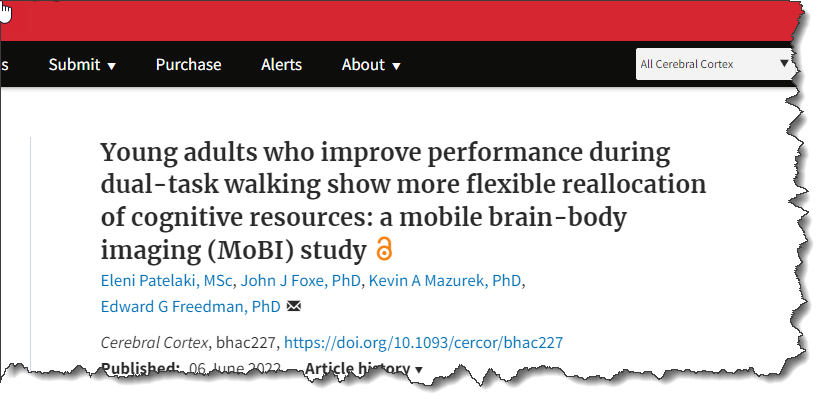
Which one is better?
Unsubscribe | Report as spam | Change email preferences
Monotasking vs multitasking

Are you a one thing at a time kind of guy…
…or do you like having multiple things in the oven at once?
I may be mixing up my metaphors, but you get the gist.
The point is, there’s been a lot of research around whether or not humans are good at multitasking…
…and the answer is — usually that we’re not.
Most of the time, trying to do more than one thing at a time results in worse results.
We’re really wired to be monotaskers, meaning that our brains can only focus on one task at a time, says neuropsychologist Cynthia Kubu, PhD. “When we think we’re multitasking, most often we aren’t really doing two things at once, but instead, we’re doing individual actions in rapid succession, or task-switching,” she says.
In general, task switching and having divided attention isn’t a good idea at all.
But I ran across some additional research that shows that the idea that multitasking is something humans aren’t good at is not always accurate.
Some people can multitask better than others — at least in some circumstances.
For instance, you might have heard of women being better multitaskers than men.

In this study, from the University of Rochester Medical Center, researchers have found that for some people walking and doing a mental task at the same time actually improves performance.
“It was surprising that for some of the subjects it was easier for them to do dual-tasking — do more than one task — compared to single-tasking — doing each task separately. This was interesting and unexpected because most studies in the field show that the more tasks that we have to do concurrently the lower our performance gets.”
The researchers had the people who were participating in the study look at a series of images sitting — and then while walking.
The participants were asked to click the images when they changed.
About half the participants did better at the task while walking and half did better when sitting.
The group that did better while walking had significant changes in their brain function when they were walking and completing the task at the same time…
…versus when they were sitting and doing the same task.
The electroencephalogram, or EEG, data showed that the 14 participants who improved at the task while walking had a change in frontal brain function which was absent in the 12 participants who did not improve. This brain activity change exhibited by those who improved at the task suggests increased flexibility or efficiency in the brain.
The other half of the group did better when they sat and focused on the task at hand.
This points to the idea that, like most things with human health, cognitive function is not one size fits all thing.
Different people can react in various ways to the same stimuli.
It’s also important to point out that walking doesn’t take a lot of active brain activity.
It’s not a strenuous cognitive task, but something you do fairly automatically.
I don’t think the results would be the same with two mentally demanding tasks.
After reading this study, I think it’s worth experimenting to see when you do your best work.
You can see if you seem to focus better on problems when you are sitting quietly or when you are walking around.
Personally, I know that I often get great ideas when I’m walking on the beach and quietly enjoying what’s around me.
It seems to let my brain relax so that new ideas can flow through.
Take a walk and see if it makes it easier or harder to do a task.
It may make it easier or it may not. You just don’t know until you try!
—-Important Message—-
My simple 2-second exercise overcomes PE problems — lets you last longer and longer the more you do it

I’m so glad I finally discovered how to last a long time and not come in 3 minutes like I used to…
Because now my wife is MUCH more willing to go to bed with me, knowing I can last long enough to pleasure her…
And it’s all thanks to this 2-second pelvic floor exercise I’ve been practicing.
It naturally strengthens my muscles down there… the same muscles that contract when I come…
So the more I “flex” these pelvic floor muscles, the more control I have over my own lasting power.
And the result is 30 minute sex, sometimes even hour long sex.
And you feel incredible pleasure the whole time this way.
There’s no “holding back” or sacrificing your own pleasure when you last longer this way.
And the more you do this, the longer you can last — and it feels effortless…
———-

